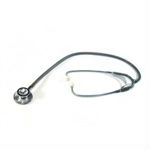 Broadband applications and services are transforming medical and healthcare and helping providers adjust and adapt to shifting demographics, economic conditions and a changing regulatory environment, according to a new whitepaper from Parks Associates.
Broadband applications and services are transforming medical and healthcare and helping providers adjust and adapt to shifting demographics, economic conditions and a changing regulatory environment, according to a new whitepaper from Parks Associates.
The cost of healthcare in the U.S. has been rising much faster than inflation for decades even as the U.S. population is aging and real income for the vast majority of Americans has stagnated, developments that have prompted repeated attempts at healthcare reform, the latest, of course, being the Affordable Care Act, or “Obamacare.” Connected healthcare services can go a long way towards addressing these intertwined issues, according to Parks’, “The Real Healthcare Changes On The Way.”
“Connected health services fill a gap in care delivery and implementation. Connected health solutions can now provide periodic or continuous health monitoring of patients, from the comfort of a patient’s home,” the whitepaper authors state.
“Remote monitoring can give physicians better insight into a patient’s care after he or she is released from the hospital, for instance. It can also provide daily monitoring of a patient who is struggling to manage a chronic health condition. Filling this healthcare gap can mitigate hospital readmission risks and catch worsening conditions at an early stage.”
According to Parks’ research, over 3 million patients in 2012 received care under a Patient-Centered Medical Home (PCMH) or Accountable Care Organization (ACO), two new healthcare provider business models being promoted as suited to providing better access to care for consumers and to realize cost savings through new efficiencies. Parks expects that number to exceed 130 million by 2017.
Both the models rely heavy on connected healthcare technology to realize their principal aims. As a result, broadband and mobile service providers are increasingly looking to enter the healthcare market in their own right, partner with healthcare service providers to launch new services, provide wholesale or retail telecoms services to healthcare industry participants, and to take advantage of opportunities in machine-to-machine (M2M) integration.
Telecompetitors and healthcare providers that can fully realize the benefits of connected healthcare services by whatever means stand to prosper, while patients and the American public more generally stand to benefit, according to Parks.
Key takeaways from Parks’ whitepaper include:
- U.S. revenues from care management for connected health care providers “will jump from $156 million in 2012 to more than $8.8 billion in 2017”;
- 30% of consumers who visit health websites are very interested in communicating with an online physician other than their primary care doctor;
- Two-thirds of U.S. broadband households used an online health service over the past 12 months to maintain their health or help manage an illness;
- Nearly 60% of those with chronic, life-threatening illnesses said they were comfortable with home health monitoring services;
- Nearly 20% of smartphone and tablet owners use an app to track or manage their fitness activities.


